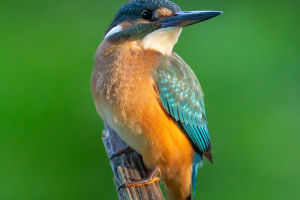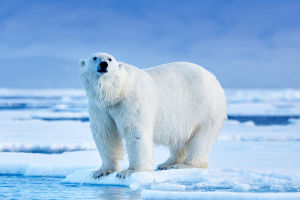Swans are graceful and beautiful water birds known for their elegant posture and gorgeous feathers.
They inhabit freshwater lakes, rivers, and wetlands around the world and are often regarded as symbols of nature's beauty.
There are many species of swans, the most common of which are the whooper swan (Cygnus cygnus) and the mute swan (Cygnus olor). Their slender bodies, long necks, and wide wings make them particularly eye-catching on the water.
While swans' feathers are usually white, some species, such as black swans (Cygnus atratus), have striking black plumage. This color difference enhances the uniqueness of swans and adds to their allure.
The social behavior of swans is very interesting. They typically live in family units and form close, lifelong partnerships. Once they find the right partner, they will work together for life, showcasing a remarkable commitment to their relationships.
Every year, they choose a suitable place to build a nest in the spring to reproduce. Swans' nests are usually constructed from grass, reeds, and other aquatic plants, often located at the water's edge or floating on the water.
The young swans can swim shortly after hatching, which allows them to adapt quickly to their surrounding environment and grow healthily under the protection of their mothers. This early independence is vital for their survival, enabling them to escape potential predators and thrive in their natural habitat.
Swans mainly feed on plant-based food, including aquatic plants, algae, and small invertebrates. They swim gracefully in the water, using their long necks to reach the bottom to find food. Swans have strong beaks that are suitable for tearing water grass and nibbling on plants.
Their feeding behavior is crucial not only for their sustenance but also for maintaining the ecological balance in their habitats. By grazing on aquatic plants, swans help to control plant overgrowth, allowing for a healthier aquatic ecosystem.
When it comes to habitat selection, swans are quite particular. They typically prefer water bodies with clear water quality and abundant vegetation. These conditions are essential for their feeding habits and provide shelter for their young.
The quality of the environment directly impacts their health and reproductive success, making the conservation of their habitats a significant concern.
In culture, swans are often regarded as symbols of elegance and beauty. They have inspired countless literary works, paintings, and musical compositions throughout history. In many cultures, swans represent love, loyalty, and purity, serving as a metaphor for ideal relationships.
For instance, the renowned ballet "Swan Lake" tells the story of an enchanted princess who wanders in the form of a swan, highlighting the mystical connection between swans and humanity. This cultural symbolism has secured a vital place for swans in both art and folklore, reinforcing their status as icons of beauty and grace.
However, the increasing human impact on the environment poses significant threats to swan populations and their habitats. Water pollution, habitat destruction, and climate change are major challenges that jeopardize the survival of these magnificent birds.
Pollution from agricultural runoff, industrial waste, and urban development contaminates water sources, leading to detrimental effects on swan health and the availability of their food sources.
Additionally, the destruction of wetlands for development or agriculture reduces the natural habitats that swans depend on for nesting and feeding. Climate change further exacerbates these issues, altering migratory patterns and affecting the seasonal availability of habitats.
In response to these threats, many countries and regions have implemented conservation measures aimed at protecting swans and their habitats. Efforts include restoring wetlands, regulating water quality, and promoting awareness about the importance of swan conservation through education and public outreach.
Many organizations focus on protecting these beautiful creatures and their environments, understanding that safeguarding swans is integral to maintaining ecological balance.
The commitment to preserving swans is not merely an ecological concern but also an endeavor to protect cultural heritage and the natural beauty that swans represent.
Swans have captivated the attention of countless individuals with their graceful demeanor and distinctive biological characteristics. Their presence enriches the ecosystem, adding beauty to our surroundings and inspiring awe in those who encounter them.
Whether gliding elegantly on the water or leisurely roaming along a quiet lakeshore, swans embody the essence of nature's splendor. Their majestic presence serves as a reminder of the intricate connections between species and the environments they inhabit.


